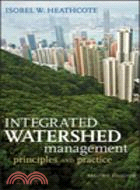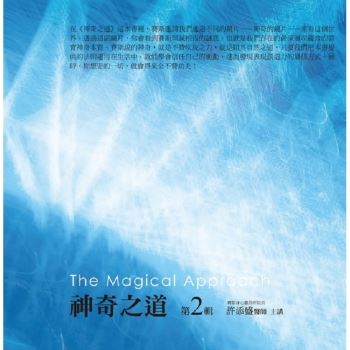| FindBook |
有 1 項符合
INTEGRATED WATERSHED MANAGEMENT PRINCIPLES AND PRACTICE 2E的圖書 |
 |
INTEGRATED WATERSHED MANAGEMENT PRINCIPLES AND PRACTICE 2E 作者:HEATHCOTE 出版社:JOHN WILEY & SONS INC 出版日期:2009-02-17 |
| 圖書館借閱 |
| 國家圖書館 | 全國圖書書目資訊網 | 國立公共資訊圖書館 | 電子書服務平台 | MetaCat 跨館整合查詢 |
| 臺北市立圖書館 | 新北市立圖書館 | 基隆市公共圖書館 | 桃園市立圖書館 | 新竹縣公共圖書館 |
| 苗栗縣立圖書館 | 臺中市立圖書館 | 彰化縣公共圖書館 | 南投縣文化局 | 雲林縣公共圖書館 |
| 嘉義縣圖書館 | 臺南市立圖書館 | 高雄市立圖書館 | 屏東縣公共圖書館 | 宜蘭縣公共圖書館 |
| 花蓮縣文化局 | 臺東縣文化處 |
|
|
- 圖書簡介
An integrated framework for water resources management
It has been said that "water is the next oil." A strong global consensus has begun to develop that effective water management must start at the watershed level, and that water management actions must be taken in the context of watersheds, and the human communities in them. Integrated Watershed Management: Principles and Practice, Second Edition presents a flexible, integrated framework for watershed management that addresses the biophysical, social, and economic issues affecting water resources and their use.
Comprehensive in scope and multidisciplinary in approach, it equips readers with the necessary tools and techniques to develop sound watershed management policy and practice—from problem definition and goal setting to selecting management strategies and procedures for monitoring implementation. Ten years of practice have demonstrated that the core concepts presented in the first edition of this book remain true and important. This Second Edition is fully updated to reflect current practice and recent experience in watershed management, including:
New coverage of strategies for the selection and evaluation of public engagement processes
Sampling, data management, and computer simulation technologies
Recent legislative changes
International watershed issues
Many new case studies
Water resources planning and management is not just a technical challenge; it is also a social challenge, and an opportunity. It is, ultimately, a framework for human societies to shape, protect, and improve the environment in which they live. Providing a rational framework for the development of water resources management strategies, Integrated Watershed Management, Second Edition is a one-stop resource for upper-level students and professionals in environmental science, natural resource management, and environmental engineering. - 作者簡介
Isobel W. Heathcote is Professor of Environmental Engineering and Environmental Sciences at the University of Guelph in Canada. She is also a former Canadian co-Chair of the Science Advisory Board of the International Joint Commission and is the author of over 140 papers, water policy analyses, and presentations.
- 目次
Preface.
1. Introduction.
1.1. Current Issues in Weather Management.
1.2. Characteristics of Effective Watershed Management.
1.3. Why "Integrated"Management?
1.4. A Recommend Planning and Management Approach.
2. The Watershed Inventory.
2.1. Physical Features sand Landforms.
2.2. Climate.
2.3. Soils, Infiltration and Runoff.
2.4. Streamflow.
2.5. Groundwater.
2.6. Water Quality.
2.7. Pl.ant and Animal Communities.
2.8. Land Use.
2.9. Social and Economic Systems.
2.10. Valued Features and Activities.
3. Problem Dentition and Scoping.
3.1. Identifying Current Water Uses and Use Impairments.
3.2. Identifying Current Water Users (Stakeholders).
3.3. Setting Targets for Future Use.
3.4. Scoping the Plan.
4. The Consultation Process.
4.1. The Need for Public Involvement.
4.2. Principles of Consultation.
4.3. Indentifying Interested Publics.
4.4. Public Involvement Techniques and Processes.
4.5. Evaluating the Results.
5. Developing Workable Management Options.
5.1. Identifying the Sources.
5.2. Creating a Long List of Management Options.
5.3. Types of Options.
5.4. Developing Mutually Exclusive Management Alternatives.
5.5. Evaluation Constraints and Criteria.
6. Simple Assessment Methods.
6.1. The Watershed Inventory.
6.2. Scoping.
6,.3. Developing and Screening Management Alternatives.
6.4. Outputs of a Simple Assessment Process.
6.5. An Example of the Application of Simple Assessment Procedures.
7. Detailed Assessment Methods.
7.1. The Detailed Watershed Inventory.
7.2. Scoping.
7.3. Developing and Screening Management Alternatives.
8. Costing and Financing.
8.1. Scope and Measures.
8.2. Costing Major Public Works.
8.3. Benefit-Cost Analysis.
8.4. Allocation of Costs Among Multipurpose Projects.
8.5. Quantifying Intangibles.
8.6. Incorporating Risk and Uncertainty in Economic Analyses.
8.7. Capital Financing (Sourcing).
9. Legal, Institutional, and Administrative Concerns.
9.1. The Evolution of Modern Environmental.
9.2. Common-Law Causes of Action.
9.3. The Making of Laws.
9.4. Existing Legal Frameworks for Water and Environmental Management.
9.5. Administrative and Institutional Systems.
9.6. Transboundary Water Issues and Free Trade.
10. Environmental and Social Impact Assessment.
10.1. The History of Environmental Assessment Policy.
10.2. Overview of the EA Process.
10.3. Challenges in Environmental Assessment.
10.4. Environmental Assessment Methodologies.
10.5. Social Impact Assessment.
10.6. Strategic Environmental Assessment.
10.7. Monitoring and Follow-Up.
10.8. The Shortcoming of Environmental Assessment.
11. Choosing the Best Plan.
11.1. Evaluating the Effectiveness of Options and Strategies.
11.2. Implementation Considerations.
11.3. Case Study: Watershed Management for Gander Lake, Newfoundland.
12. Implementing the Plan.
12.1. Principles of Water Resources Administration.
12.2. Planning for Successful Implementation.
12.3. Why Implementation Sometimes Fails.
12.4. Case Studies.
12.5. Lessons Learned.
References.
Index.
|











